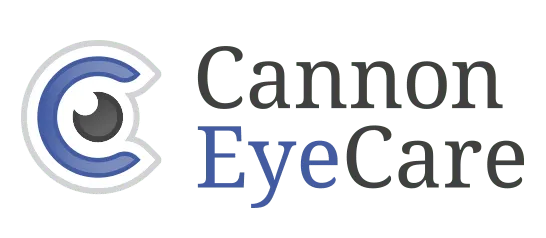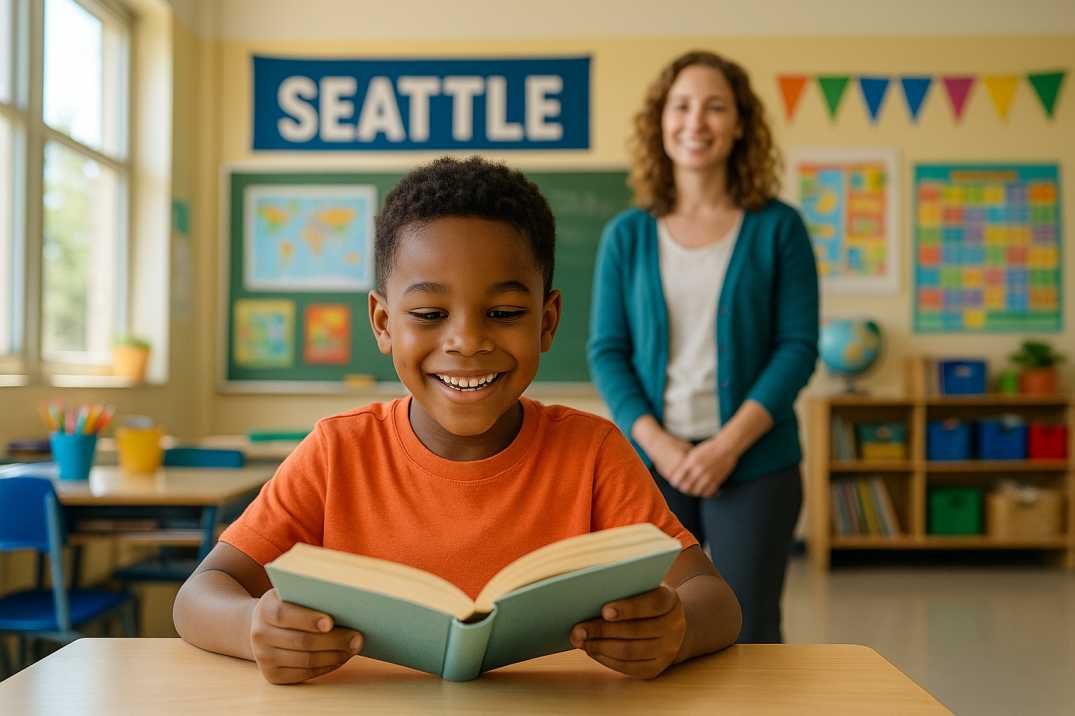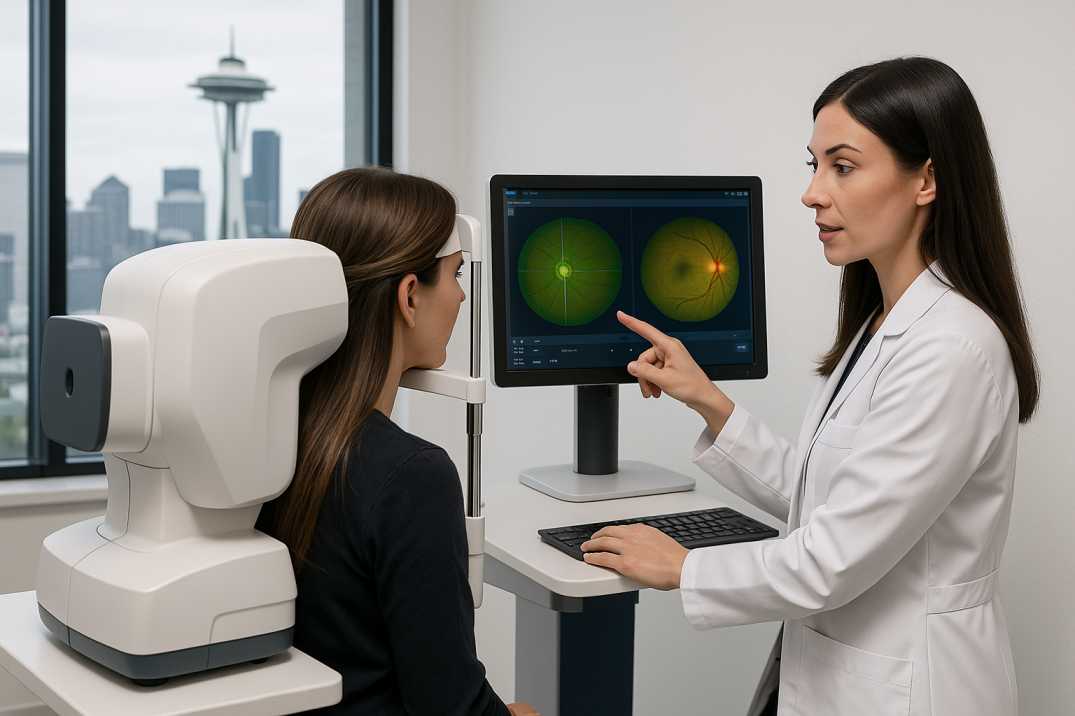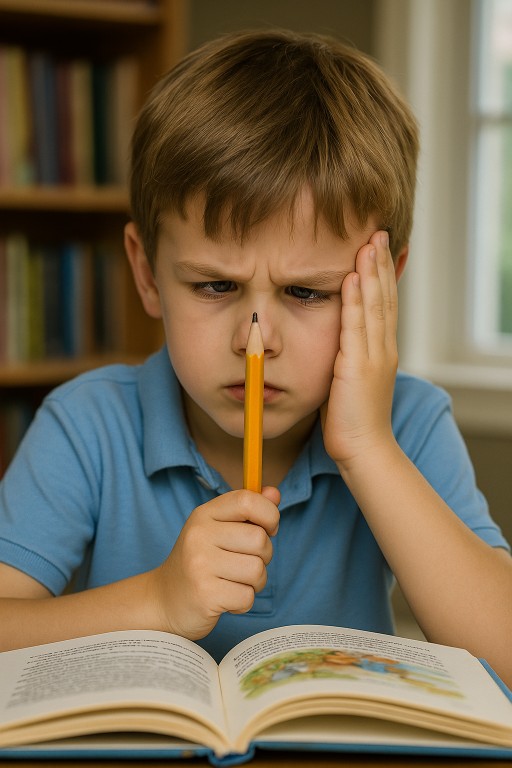Pediatric Eye Care: Vision Help for Kids
Pediatric ophthalmology is a specialized medical field that focuses on diagnosing and treating eye conditions in infants, children, and adolescents. Unlike general ophthalmology, pediatric eye specialists understand the unique visual development needs of growing children. These specialized doctors examine young patients’ eyes to detect vision problems early, prescribe corrective lenses when needed, and provide targeted treatments to ensure optimal eye health throughout childhood development.
Key Takeaways: Why Pediatric Eye Care Matters
-
Early vision screening is essential: Undiagnosed eye issues can affect learning, development, and confidence—screening is recommended by age 3.
-
Kids’ eyes need specialized care: Pediatric ophthalmologists are trained to handle the rapid visual and neurological development unique to childhood.
-
Exams are designed for comfort and fun: From animated eye charts to playful testing methods, visits are tailored to reduce anxiety and encourage cooperation.
-
Treatment goes beyond glasses: Conditions like amblyopia and strabismus are managed through vision therapy, prism lenses, or minimally invasive surgery.
-
Training sets pediatric eye doctors apart: They undergo fellowship programs that focus on child-specific anatomy, psychology, and tools.
-
Systemic diseases can affect vision: Pediatric ophthalmologists help detect vision changes caused by conditions like diabetes or genetic disorders.
-
Parental preparation improves outcomes: Bringing comfort items, medical notes, and post-exam sunglasses makes the visit smoother for both child and parent.
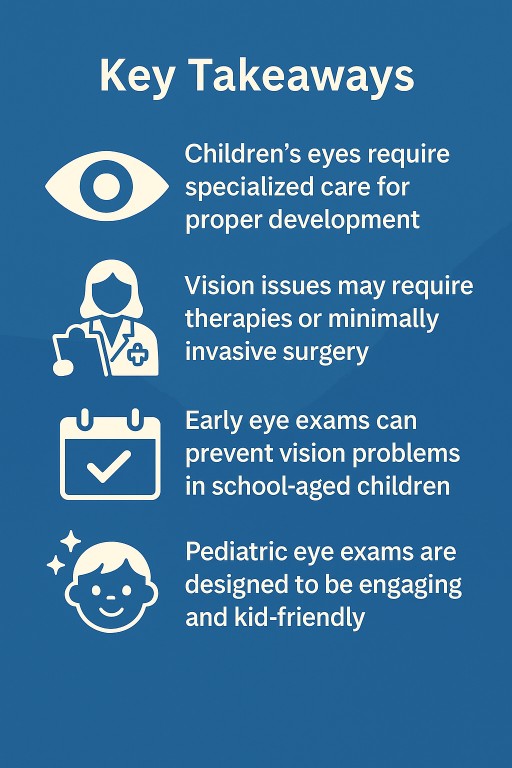
Pediatric Ophthalmology
Ever wonder why kids’
feel different from adults’? Pediatric ophthalmology isn’t just about tiny glasses—it’s about safeguarding the magic of childhood vision. These specialists are like vision detectives for little ones, trained to spot subtle clues in developing eyes. Here’s why their role matters:
What Makes Pediatric Eye Care Unique?
-
Developmental Focus: Children’s eyes aren’t just smaller—they’re rapidly wiring to the brain until age 12. A missed issue like amblyopia (lazy eye) can alter this process permanently.
-
Child-Centered Techniques: From using animated eye charts (think flying unicorns!) to distraction tricks during dilation drops, they turn exams into play.
-
Beyond Glasses: They treat complex issues like strabismus (crossed eyes) with therapies tailored for growing bodies, such as:
-
Vision therapy games (yes, it’s like homework with stickers!).
-
Prism lenses to redirect light in misaligned eyes.
-
Minimally invasive surgery for congenital cataracts.
-
Did You Know?
1 in 4 school-aged children has an undiagnosed vision problem. Early exams (recommended by age 3!) can prevent struggles with reading, sports, and social confidence.
Specialized Training Requirements for Pediatric Ophthalmologists
Becoming a pediatric ophthalmologist requires extensive medical training beyond traditional medical school education. After completing their medical degree, these specialists pursue additional fellowship training specifically in children’s eye care. This specialized pediatric ophthalmology training includes:
- Advanced study of childhood eye development and disorders
- Child psychology and communication techniques
- Age-appropriate examination methods for infants and young children
- Specialized equipment training for pediatric eye exams
Pediatric eye doctors receive unique training in creating child-friendly environments and using gentle examination techniques that help young patients feel comfortable during comprehensive eye evaluations.
Critical Benefits of Pediatric Eye Care
Children’s vision undergoes crucial neurological development until approximately age 12, making early pediatric eye exams essential for lifelong visual health. Professional pediatric eye care during these formative years offers significant advantages:
Early Detection Benefits:
- Identifies vision problems during critical development windows
- Enables more effective treatment outcomes
- Prevents long-term visual complications
Common Conditions Successfully Treated:
- Strabismus (crossed eyes): Early intervention ensures proper binocular vision development
- Pediatric myopia (nearsightedness): Corrective lenses improve academic performance and quality of life
- Amblyopia (lazy eye): Treatment is most effective before age 8-9
- Systemic diseases affecting vision: Comprehensive care addresses underlying health conditions
Pediatric ophthalmologists also specialize in detecting how systemic diseases like diabetes, autoimmune disorders, and genetic conditions can impact children’s developing visual systems.
What to Expect During Your Child’s Eye Exam: A Parent’s Guide
We know walking into a medical office can feel overwhelming for kids (and parents, too!). Here’s how to prepare for a pediatric ophthalmologist visit and turn it into a positive experience:
Plan for Time
-
First visits often take 90 minutes to 2 hours—think of it as a “vision adventure” with breaks for snacks or stickers!
-
Special tests (like retinal imaging) may add time, but they’re painless and help catch issues early.
Before You Go
-
Pack a comfort item (favorite toy/blanket) and a water bottle.
-
Bring:
-
Insurance card
-
List of medications/allergies (even seasonal ones!)
-
Notes about symptoms (e.g., “squints at whiteboard” or “rubs eyes after reading”).
-
The Child-Friendly Exam
-
For toddlers: Games like “follow the red light” or matching shapes replace standard charts.
-
For older kids: Digital tools measure eye teamwork (think 3D images!) and muscle strength.
-
The ophthalmoscope (a handheld flashlight) lets doctors peek inside eyes—we call it the “space laser” to ease nerves.
Eye Drops: The Temporary Blur
-
Dilation drops help doctors spot hidden issues like lazy eye or retinal concerns.
-
Parent tip: Bring sunglasses! Lights feel brighter afterward, and blurry vision lasts 4–6 hours (perfect for a post-appointment ice cream treat).
After the Exam
-
Your doctor will explain findings in plain language, no medical jargon.
-
If treatment’s needed, options range from fun vision therapy games to specialty glasses with cartoon frames.
Pediatric Ophthalmology: FAQ Section
-
What is a pediatric ophthalmologist?
A pediatric ophthalmologist is a medical doctor specializing in children’s eye health, diagnosing and treating eye problems, prescribing glasses, and performing eye surgery if needed
-
When should my child have their first eye exam?
-
How can I tell if my child has vision problems?
-
What eye conditions do pediatric ophthalmologists treat?
-
What happens during a pediatric eye exam?
-
How long does a pediatric eye exam take?
-
Is it safe for my child to return to school after an eye exam?
-
Why does my child need an eye exam if they seem to see fine?
-
What should I bring to my child’s first eye appointment?
-
Can children wear contact lenses?
-
How often should my child have an eye exam?
-
What if my child is afraid of eye exams?
